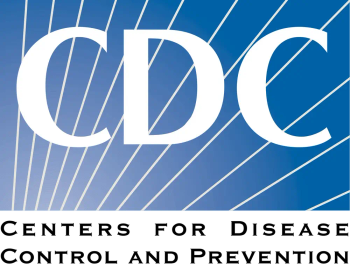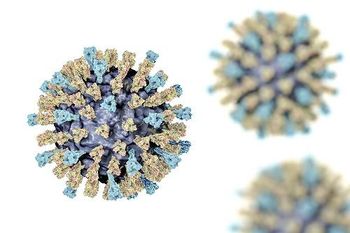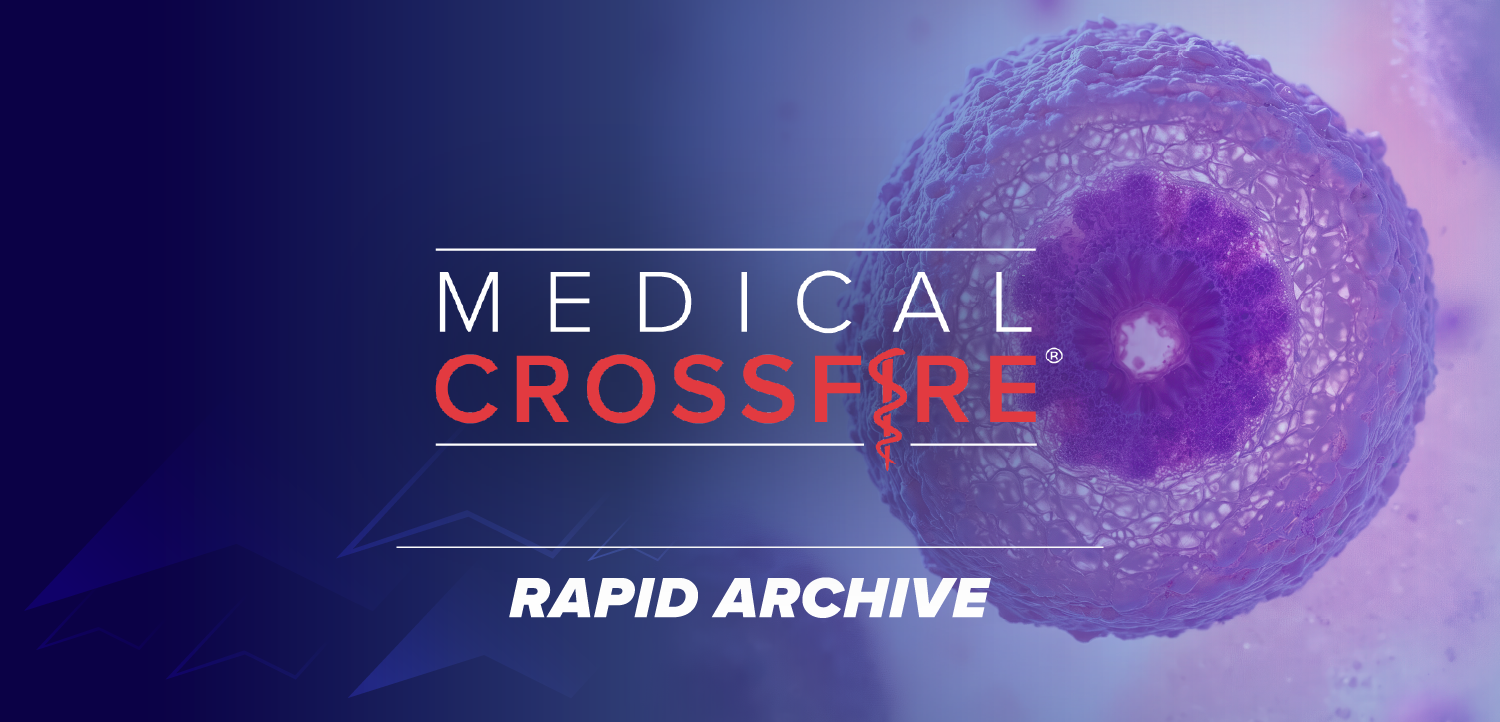Although many clinicians may still be processing the collective trauma of COVID-19 , it has been nearly five years since the start of the pandemic.1 According to the World Health Organization (WHO), there have been approximately 777 million cumulative cases of COVID-19 with over 7 million deaths attributed to the disease.2
The large spikes of COVID-19 cases seen in the winters of 2021 and 2022 decreased in intensity by winter 2023. Indeed, this year's recent cases reported by the WHO demonstrate an overall trending decline. Obtaining exact numbers of severe and critically ill COVID-19 cases in the United States remains difficult but data from the Centers for Disease Control and Prevention (CDC) demonstrates a decreased weekly death rate attributed to COVID-19.3 Yet despite improving numbers, for many clinicians the memory of critically ill COVID-19 patients has yet to wane.
The news of decreasing vaccination rates (CDC reports that 21.0% of adults > 18 have received 2024-2025 updated vaccine) and the constant possibility of a clinically impactful viral mutation linger as veiled threats for the intensivist. The purpose of the following is to provide a brief review of updates in epidemiology, classification of variants, diagnostic considerations, management, and long term effects of those with critical illness due to COVID-19.
Since the initial onset of the 2019 novel coronavirus, numerous variants have been identified. In an attempt to classify clinically significant variants, the WHO developed updated definitions for variant subclasses in 2023. These subclasses include the terms Variant Under Monitoring (VUM), Variant of Interest (VOI), and Variant of Concern (VOC). VUM and VOI are categorized by scientific nomenclature systems (eg JN118) with VOIs representing variants with genetic changes that affect viral characteristics (eg transmissibility, virulence) and have growth advantages over other variants.
In addition to meeting the definition of VOI, VOC must be associated with either a detrimental change in clinical disease severity, a change in COVID-19 epidemiology causing substantial impact on health systems, or a significant decrease in the effectiveness of available vaccines. Additionally, VOCs are the only variant identified with Greek letters. To date there have been a total of 5 VOCs: Alpha, Beta, Gamma, Delta, and Omicron. As of December 2, 2024 no VOCs are listed on the WHO website although there is one VOI (JN1) and several VUMs.
Microbiologic work up of COVID-19 should include at a minimum the collection of respiratory specimens for nucleic amplification testing (NAAT). The WHO recommends consideration of fecal specimens and postmortem samples in the deceased. Antibody testing is not recommended in acute illness but testing for other potential etiologies based on local epidemiology such as influenza is encouraged. For severe or critical illness, blood cultures should also be obtained prior to initiation of antimicrobial therapy if able.
The definition of severe COVID-19 differs slightly between guidelines but generally requires hypoxemia at room air (≤90% per WHO,4 < 94% per NIH/CDC5), tachypnea (respiratory rate > 30), and signs of pneumonia including cough and lung infiltrates on chest imaging. Criteria for critically ill patients is less nuanced and includes those with associated acute organ dysfunction, shock, or need for respiratory support with either non-invasive or invasive ventilation. One of the hallmarks of patients with critical illness from COVID-19 is acute respiratory distress syndrome (ARDS).
Current guidelines focus on previously established protocols for ARDS with use of high-flow nasal cannula, a trial of non-invasive ventilation, judicious use of intravenous fluids, support for low tidal volume ventilation once mechanical ventilation is required, and prone positioning for intubated patients with a PaO2/FiO2 ratio of < 150.6
The WHO currently conditionally recommends awake prone positioning not requiring mechanical ventilation although high quality evidence supporting its use is limited. A trial of higher positive end expiratory pressure (PEEP) is suggested with a focus on patient individualization and monitoring of driving pressures. Routine use of continuous infusions of neuromuscular blocking agents is no longer recommended,7 however can be considered in certain patients such as those with ventilator dyssynchrony. ECMO referral is recommended for capable centers in patients who have refractory hypoxemia (PaO2:FiO2 < 80 mmHg for > 6 hours) despite optimization of a lung protective strategy.
What You Need to Know
While global data shows a steady decline in severe COVID-19 cases and deaths, ongoing concerns about low vaccination uptake and the potential for new, more dangerous variants continue to pose threats—especially in critical care settings.
he WHO updated its variant classification system in 2023, and no current variants of concern (VOCs) are listed as of December 2024. Diagnostic guidelines stress nucleic acid amplification testing (NAAT) and discourage antibody testing in acute cases.
Remdesivir and dexamethasone remain mainstays of treatment for hospitalized patients with oxygen needs, while therapies like IL-6 and JAK inhibitors are recommended in select severe cases. The IDSA no longer supports routine use of certain agents, including convalescent plasma in hospitalized patients and medications like ivermectin and colchicine.
Decreasing rates of COVID-19 and the available pharmaceutical armamentarium against COVID-19 led to the dissolution of the NIH Treatments Guideline Panel in August of 2024. Nevertheless the panel’s work provided a robust foundation for other society guidelines. The Infectious Disease Society of America (IDSA), American College of Physicians (ACP) and WHO provide the basis of high quality clinical recommendations for COVID-19 in 2024.8 The following summarizes currently widely accepted therapeutic options for hospitalized patients with COVID-19. Remdesivir remains recommended as first-line antiviral therapy for hospitalized patients requiring oxygen therapy after demonstrating decreased time to recovery for this population but is not recommended for patients requiring mechanical ventilation.9-10 Other recommended antiviral therapies generally focus on management of nonhospitalized individuals and include nirmatrelvir and ritonavir. Immunomodulation therapy consists of steroids which demonstrated decreased mortality in hospitalized patients requiring oxygen who received dexamethasone in the pivotal RECOVERY trial.11 Non steroidal immunomodulatory options include interleukin-6 (IL-6) inhibitors (tocilizumab, sarilumab) and a Janus kinase (JAK) inhibitors (baricitinib, tofacitinib) which have been shown to decrease mortality in critically ill patients requiring oxygen and receiving dexamethasone.11-13 Although these medications were recommended by the prior NIH guidelines and current WHO guidelines as add-on therapy to dexamethasone for patients on high flow nasal cannula, non invasive ventilation, mechanical ventilation, extracorporeal membrane oxygenation or those with rapidly escalating oxygen requirements and signs of systemic inflammation the IDSA does not advocate for their use in mechanically ventilated patients.
Additionally, the IDSA gives a conditional recommendation against the use of anakinra, a recombinant IL-1 inhibitor, in the management of severe COVID-19. Antibody therapy via either neutralized antibodies or convalescent plasma is not routinely recommended in severe COVID-19. The former has fallen out of favor due to Omicron sub-variants that developed less in vitro susceptibility to multiple neutralizing antibodies. Convalescent plasma on the other hand has no role in hospitalized patients with COVID-19 but is recommended by the IDSA for ambulatory patients with mild to moderate disease with high risk of progression who have no alternative treatment options. There is an additional smattering of other medications (ivermectin, inhaled corticosteroids, famotidine, colchicine) that the IDSA has recommended against in the treatment of COVID-19 infection.
References
1. Makari GJ, Friedman RA. Collective Trauma and Commemoration - A Moment of Silence, Please. N Engl J Med. 2024;391(6):487-489. doi:10.1056/NEJMp2405167
2.WHO COVID-19 dashboard. WHO. Accessed June 12, 2025.
https://data.who.int/dashboards/covid19/deaths
3. COVID Data Tracker. CDC. Accessed June 12, 2025.
https://covid.cdc.gov/covid-data-tracker/#datatracker-home
4. Clinical management of COVID-19. WHO. January 13, 2023. Accessed June 12, 2025.
5.Gulick RM, Pau AK, Daar E, et al. National Institutes of Health COVID-19 Treatment Guidelines Panel: Perspectives and Lessons Learned. Ann Intern Med. 2024;177(11):1547-1557. doi:10.7326/ANNALS-24-00464
6.Guérin C, Reignier J, Richard JC, et al. Prone positioning in severe acute respiratory distress syndrome. N Engl J Med. 2013;368(23):2159-2168. doi:10.1056/NEJMoa1214103
7.Papazian L, Forel JM, Gacouin A, et al. Neuromuscular blockers in early acute respiratory distress syndrome. N Engl J Med. 2010;363(12):1107-1116. doi:10.1056/NEJMoa1005372
8.Bhimraj A, Morgan RL, Shumaker AH, et al. Infectious Diseases Society of America Guidelines on the Treatment and Management of Patients With COVID-19 (September 2022). Clin Infect Dis. 2024;78(7):e250-e349. doi:10.1093/cid/ciac724
9.Beigel JH, Tomashek KM, Dodd LE, et al. Remdesivir for the Treatment of Covid-19 - Final Report. N Engl J Med. 2020;383(19):1813-1826. doi:10.1056/NEJMoa2007764
10. WHO Solidarity Trial Consortium. Remdesivir and three other drugs for hospitalised patients with COVID-19: final results of the WHO Solidarity randomised trial and updated meta-analyses [published correction appears in Lancet. 2022 Oct 29;400(10362):1512. doi: 10.1016/S0140-6736(22)01993-6] [published correction appears in Lancet. 2024 Jan 13;403(10422):146. doi: 10.1016/S0140-6736(24)00005-9]. Lancet. 2022;399(10339):1941-1953. doi:10.1016/S0140-6736(22)00519-0
11.Horby P, Lim WS, et al. Dexamethasone in Hospitalized Patients with Covid-19. N Engl J Med. 2021;384(8):693-704. doi:10.1056/NEJMoa2021436
12.Gordon AC, Mouncey PR, et al. Interleukin-6 Receptor Antagonists in Critically Ill Patients with Covid-19. N Engl J Med. 2021;384(16):1491-1502. doi:10.1056/NEJMoa2100433
13.Marconi VC, Ramanan AV, de Bono S, et al. Efficacy and safety of baricitinib for the treatment of hospitalised adults with COVID-19 (COV-BARRIER): a randomised, double-blind, parallel-group, placebo-controlled phase 3 trial [published correction appears in Lancet Respir Med. 2021 Oct;9(10):e102. doi: 10.1016/S2213-2600(21)00410-0]. Lancet Respir Med. 2021;9(12):1407-1418. doi:10.1016/S2213-2600(21)00331-3

















































































































































































































































































